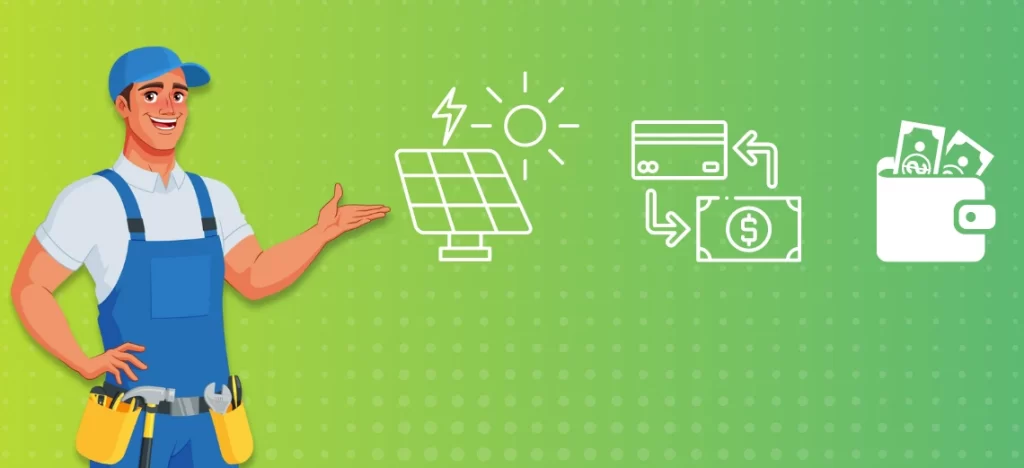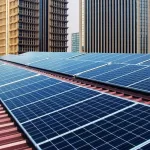
In today’s world, environmental awareness has become a significant topic, and renewable energy sources are not just a trend but a necessity. As homeowners, industries, and governments worldwide make the shift towards greener energy solutions, understanding the intricacies behind these options becomes crucial.
One such concept that has caught everyone’s attention, especially in the field of solar energy, is the Solar Renewable Energy Certificate, commonly known as an SREC. But what exactly are SRECs? Well, SRECs represent the environmental benefits of producing one megawatt-hour of electricity.
Based on the report from Energy Sage, a solar panel system with a potential of 10 kW generates approximately 10 to 13 MWh of electricity each year. Consequently, this would yield an annual earning of 10 to 13 SRECs and help you take financial benefits from the credits.
In this blog, we will discuss how do SRECs work and why they are important in the journey toward a sustainable future. Let’s Discuss!
What is an SREC?
SRECs, or Solar Renewable Energy Certificates, are tradable environmental commodities that generate a certain amount of electricity from a solar energy source. An SREC shows how good it is for the environment to make one megawatt-hour (MWh) of power from solar energy sources.
If you produce 1,000 kWh (1 MWh) of solar power from solar panels, you get one SREC, which is a useful credit. SRECs are very valuable because utility companies are required by the state’s Renewable Portfolio Standard (RPS) to buy a certain number of them every year. These credits are very important for encouraging the use of solar energy and meeting green energy goals.
1 SREC = 1 MWh of solar power production = 1,000 kWh of solar power production
Why Do SRECs Exist?
Governments and organizations are keen on reducing greenhouse gas emissions & encouraging the usage of renewable energy. Many states or regions have implemented Renewable Portfolio Standards or similar mandates to achieve this.
These standards require utility companies to produce a certain percentage of energy from renewable sources. If they can’t generate enough themselves, they can buy SRECs to meet these requirements. This creates a market for SRECs.
How is the Value of an SREC Determined?
The value of an SREC is based on how much demand and supply there is in the solar market. According to Solar.com, the value of an SREC varies from $3.50 to nearly $400, depending on the solar market. Among the things that affect its price are:
- If a state has strict RPS requirements, there may be more desire for SRECs, which could cause prices to go up.
- Alternative Compliance Payments are a fee that utilities have to pay if they don’t meet their RPS standards. If the ACP is high, utilities may be more likely to buy SRECs instead of paying the fee, which drives up the price of SRECs.
- If there are a lot of solar systems in a state, there could be too many SRECs, which could cause their price to go down.
There are several other ways for a solar company and sellers who have to follow the RPS to meet the standard. They can make or buy the green energy they need on their own. Or, they can purchase renewable energy credits (REC) from people who own renewable energy. This includes people who live in homes with solar panels on the roof.
So, when utility companies buy RECs instead of building their own solar farms, your SRECs are worth the money. Moreover, understanding “how does SREC work” is key to unlocking the financial incentives behind solar energy production.
Pro Tip: [To know more about solar panel installation for your Commercial property, click here!]
How Can You Sell Your SRECs?
Step #1 Register Your System
Before your system generates SRECs, it typically needs to be certified and registered with the appropriate state rules and regulations.
Step #2 How You Want to Sell Your SRECs?
After registration, you can begin selling your SRECs. Here are your three alternative ways to sell your SREC:
- Receive an immediate payment by selling the rights to all SRECs from your energy system.
- Enter into a contract to sell your SRECs over a specified duration, typically three, five, or ten years.
- Opt for spot market sales, selling your SRECs as they’re generated.
Step #3 Agreement on Contracts for SREC
- Sign an official contract with a known SREC collector for a set amount of time, which is usually three, five, or ten years. This deal ensures that your Solar Renewable Energy Credits (SRECs) will always be worth the same amount.
- When your system creates an SREC, the aggregator has to send you cash.
- The aggregator sells your SRECs on your account and keeps a small portion of the money as payment.
Advantages
- Gives you a guaranteed SREC rate for the length of the deal, protecting you from any changes in the market.
- Gives more information about how much money is expected to come in from SRECs, which helps with more accurate financial planning.
- Your financial interests are protected in case the price of SRECs drops quickly.
Disadvantages
- SRECs contracts don’t start making you money until your system starts making energy, so they don’t help you save on installation costs immediately.
- When contracts are for a longer duration of time, each SREC may bring in less money.
- If the price of SRECs goes up for no reason, you could lose money if you agree to a set rate.
Conclusion
In conclusion, SRECs offer an excellent opportunity for solar energy adopters to capitalize on their commitment to sustainable energy. By understanding “how do SRECs work” and aligning with knowledgeable industry professionals, one can maximize their solar installations’ financial and environmental benefits.
Engaging with trusted professionals is important for those considering adopting solar energy services for their homes. Companies like Infinity Energy offer expertise in solar panel installations, ensuring that homeowners and businesses can seamlessly transition to renewable energy and benefit from SRECs. Get a free estimate today!




